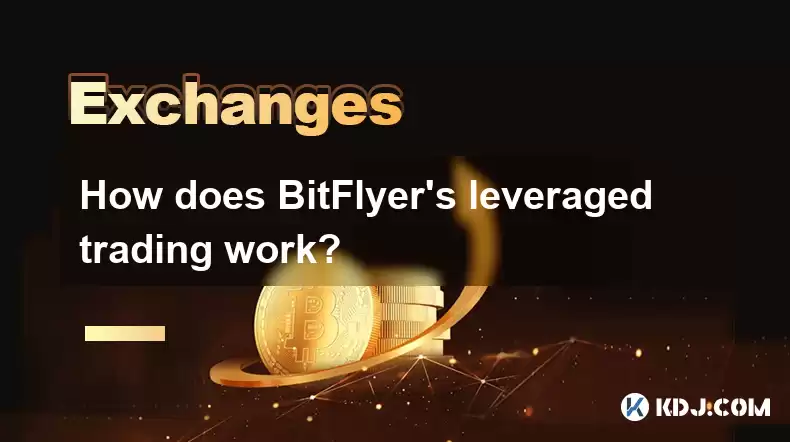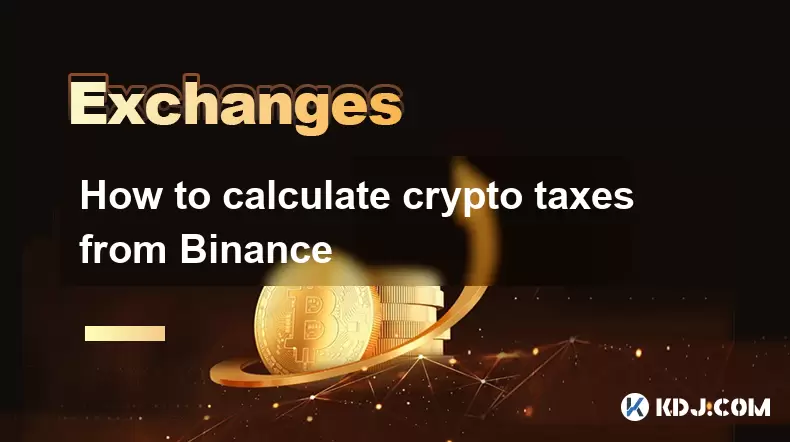-
 Bitcoin
Bitcoin $117500
2.15% -
 Ethereum
Ethereum $3911
6.19% -
 XRP
XRP $3.316
10.79% -
 Tether USDt
Tether USDt $1.000
0.01% -
 BNB
BNB $787.2
2.24% -
 Solana
Solana $175.2
4.15% -
 USDC
USDC $0.9999
0.00% -
 Dogecoin
Dogecoin $0.2225
8.40% -
 TRON
TRON $0.3383
0.28% -
 Cardano
Cardano $0.7868
6.02% -
 Stellar
Stellar $0.4382
9.34% -
 Hyperliquid
Hyperliquid $40.92
7.56% -
 Sui
Sui $3.764
7.63% -
 Chainlink
Chainlink $18.48
10.66% -
 Bitcoin Cash
Bitcoin Cash $582.1
1.88% -
 Hedera
Hedera $0.2601
6.30% -
 Avalanche
Avalanche $23.33
4.94% -
 Ethena USDe
Ethena USDe $1.001
0.02% -
 Litecoin
Litecoin $122.3
2.04% -
 UNUS SED LEO
UNUS SED LEO $8.969
-0.27% -
 Toncoin
Toncoin $3.339
0.86% -
 Shiba Inu
Shiba Inu $0.00001287
4.30% -
 Uniswap
Uniswap $10.43
7.38% -
 Polkadot
Polkadot $3.861
5.08% -
 Dai
Dai $1.000
0.02% -
 Bitget Token
Bitget Token $4.513
3.41% -
 Monero
Monero $267.7
-6.18% -
 Cronos
Cronos $0.1499
4.14% -
 Pepe
Pepe $0.00001110
5.15% -
 Aave
Aave $284.9
8.28%
How does BitFlyer's leveraged trading work?
BitFlyer offers leveraged trading with up to 25x leverage, allowing traders to amplify profits but also increasing risks like liquidation and high volatility.
Apr 19, 2025 at 06:00 am

BitFlyer, a prominent cryptocurrency exchange, offers leveraged trading as a feature that allows traders to potentially increase their profits by borrowing funds to trade larger positions than their account balance would otherwise allow. This article will delve into the specifics of how BitFlyer's leveraged trading works, the types of leverage available, the risks involved, and how to start trading with leverage on the platform.
Understanding Leveraged Trading on BitFlyer
Leveraged trading on BitFlyer enables traders to amplify their trading power by borrowing funds from the exchange. When a trader uses leverage, they can open a position that is larger than their initial capital. For example, with 2x leverage, a trader can control a position worth twice the value of their deposit. This can lead to higher potential profits, but it also increases the potential for losses.
BitFlyer offers different levels of leverage, typically ranging from 2x to 25x, depending on the trading pair. The amount of leverage a trader can use is determined by their account type and the specific trading pair they are interested in. It's crucial to understand that while leverage can magnify gains, it can also magnify losses, making it a high-risk trading strategy.
Types of Leverage Available on BitFlyer
BitFlyer provides several types of leverage options for its users. The most common types include:
Margin Trading: This is the standard form of leveraged trading where traders borrow funds to open larger positions. BitFlyer offers both long and short positions, allowing traders to profit from both rising and falling markets.
Futures Trading: BitFlyer also offers futures contracts, which are agreements to buy or sell an asset at a future date at a predetermined price. Futures trading can be leveraged, allowing traders to control large positions with a relatively small amount of capital.
Perpetual Swaps: These are similar to futures contracts but do not have an expiration date. Perpetual swaps on BitFlyer can be traded with leverage, providing traders with another way to gain exposure to cryptocurrency markets.
Risks Associated with Leveraged Trading
Leveraged trading comes with significant risks that traders must be aware of. The primary risk is the potential for liquidation. If the market moves against a leveraged position, the losses can exceed the initial investment, leading to a margin call. If the trader cannot meet the margin call, the position will be liquidated, and they may owe money to the exchange.
Another risk is volatility. Cryptocurrency markets are known for their high volatility, which can lead to rapid price movements. These movements can be amplified by leverage, resulting in substantial gains or losses in a short period.
Additionally, interest rates on borrowed funds can add to the cost of trading. BitFlyer charges interest on the borrowed amount, which can eat into profits if positions are held for an extended period.
How to Start Leveraged Trading on BitFlyer
To start leveraged trading on BitFlyer, follow these steps:
Register and Verify Your Account: First, you need to create an account on BitFlyer and complete the verification process. This involves providing personal information and submitting identification documents.
Deposit Funds: Once your account is verified, deposit funds into your BitFlyer account. You can use various payment methods, including bank transfers and credit cards.
Enable Margin Trading: Navigate to the trading section of the platform and enable margin trading. This may require you to agree to additional terms and conditions.
Choose a Trading Pair and Leverage Level: Select the cryptocurrency pair you want to trade and choose the desired level of leverage. BitFlyer will display the available leverage levels for each pair.
Open a Position: Decide whether you want to go long (buy) or short (sell) and enter the amount you wish to trade. The platform will calculate the required margin based on the leverage level and position size.
Monitor and Manage Your Position: Keep an eye on your position and the market. You can set stop-loss and take-profit orders to manage risk and lock in profits.
Managing Risk in Leveraged Trading
Effective risk management is crucial when engaging in leveraged trading. Here are some strategies to help manage risk:
Use Stop-Loss Orders: A stop-loss order automatically closes your position if the price reaches a certain level, limiting potential losses.
Diversify Your Portfolio: Don't put all your capital into a single leveraged position. Diversifying across different assets can help spread risk.
Start Small: If you're new to leveraged trading, start with lower leverage levels and smaller positions to gain experience without risking too much capital.
Stay Informed: Keep up with market news and trends. Being informed can help you make better trading decisions and anticipate market movements.
Understanding Margin Calls and Liquidation
A margin call occurs when the value of your position falls below a certain threshold, and you are required to deposit additional funds to maintain the position. If you fail to meet the margin call, your position will be liquidated. BitFlyer will automatically close your position to cover the borrowed funds, and you may be left with a negative balance.
To avoid liquidation, it's essential to monitor your positions closely and be prepared to add more funds if necessary. Understanding the maintenance margin requirements and keeping a buffer in your account can help prevent unexpected liquidations.
Frequently Asked Questions
Q: Can I use leverage on all trading pairs on BitFlyer?
A: No, the availability of leverage varies by trading pair. BitFlyer specifies the maximum leverage level for each pair, and some pairs may not offer leverage at all. Always check the details for the specific pair you are interested in trading.
Q: How does BitFlyer calculate the interest on borrowed funds?
A: BitFlyer charges interest on the borrowed amount at a rate that is typically updated daily. The interest rate can vary based on market conditions and the amount of leverage used. You can find the current interest rate on the BitFlyer platform.
Q: Is there a minimum amount required to start leveraged trading on BitFlyer?
A: Yes, there is a minimum amount required to open a leveraged position, which varies depending on the trading pair and the level of leverage. You can find the specific requirements on the BitFlyer platform before opening a position.
Q: Can I withdraw funds while I have open leveraged positions?
A: It depends on your account balance and the margin requirements for your open positions. If withdrawing funds would cause your account balance to fall below the required margin, BitFlyer may not allow the withdrawal. Always ensure you have sufficient funds to meet margin requirements before attempting to withdraw.
Disclaimer:info@kdj.com
The information provided is not trading advice. kdj.com does not assume any responsibility for any investments made based on the information provided in this article. Cryptocurrencies are highly volatile and it is highly recommended that you invest with caution after thorough research!
If you believe that the content used on this website infringes your copyright, please contact us immediately (info@kdj.com) and we will delete it promptly.
- Tron's Sell-Off Spurs Altcoin Shift: What's Next for TRX?
- 2025-08-08 08:30:12
- RUVI Presale: Is the Growth Potential Real?
- 2025-08-08 09:10:12
- Sleep Token's US Takeover: Thornhill Rides the 'Even In Arcadia' Wave
- 2025-08-08 08:30:12
- FTT Token's Wild Ride: Creditor Repayments vs. Market Drop - A New Yorker's Take
- 2025-08-08 07:10:12
- Floki Crypto Price Prediction: Riding the Robinhood Rocket or Just a Meme?
- 2025-08-08 07:15:12
- EigenLayer, Restaking, and Ethereum: Navigating the Hype and the Hazards
- 2025-08-08 06:30:12
Related knowledge

How to use margin trading on Poloniex
Aug 08,2025 at 09:50am
Understanding Margin Trading on Poloniex

How to use advanced trading on Gemini
Aug 08,2025 at 04:07am
Understanding Advanced Trading on GeminiAdvanced trading on Gemini refers to a suite of tools and order types designed for experienced traders who wan...

How to deposit USD on Bitstamp
Aug 07,2025 at 05:18pm
Understanding Bitstamp and USD DepositsBitstamp is one of the longest-standing cryptocurrency exchanges in the industry, offering users the ability to...

How to use the Kraken Pro interface
Aug 08,2025 at 09:57am
Understanding the Kraken Pro Interface LayoutThe Kraken Pro interface is designed for both novice and experienced traders seeking a streamlined experi...

How to find my transaction ID on Gemini
Aug 08,2025 at 12:50am
Understanding the Transaction ID in Cryptocurrency ExchangesA transaction ID (TXID) is a unique alphanumeric string that identifies a specific transfe...

How to calculate crypto taxes from Binance
Aug 08,2025 at 07:56am
Understanding Cryptocurrency Taxation on BinanceCalculating crypto taxes from Binance requires a clear understanding of how tax authorities classify d...

How to use margin trading on Poloniex
Aug 08,2025 at 09:50am
Understanding Margin Trading on Poloniex

How to use advanced trading on Gemini
Aug 08,2025 at 04:07am
Understanding Advanced Trading on GeminiAdvanced trading on Gemini refers to a suite of tools and order types designed for experienced traders who wan...

How to deposit USD on Bitstamp
Aug 07,2025 at 05:18pm
Understanding Bitstamp and USD DepositsBitstamp is one of the longest-standing cryptocurrency exchanges in the industry, offering users the ability to...

How to use the Kraken Pro interface
Aug 08,2025 at 09:57am
Understanding the Kraken Pro Interface LayoutThe Kraken Pro interface is designed for both novice and experienced traders seeking a streamlined experi...

How to find my transaction ID on Gemini
Aug 08,2025 at 12:50am
Understanding the Transaction ID in Cryptocurrency ExchangesA transaction ID (TXID) is a unique alphanumeric string that identifies a specific transfe...

How to calculate crypto taxes from Binance
Aug 08,2025 at 07:56am
Understanding Cryptocurrency Taxation on BinanceCalculating crypto taxes from Binance requires a clear understanding of how tax authorities classify d...
See all articles

























































































